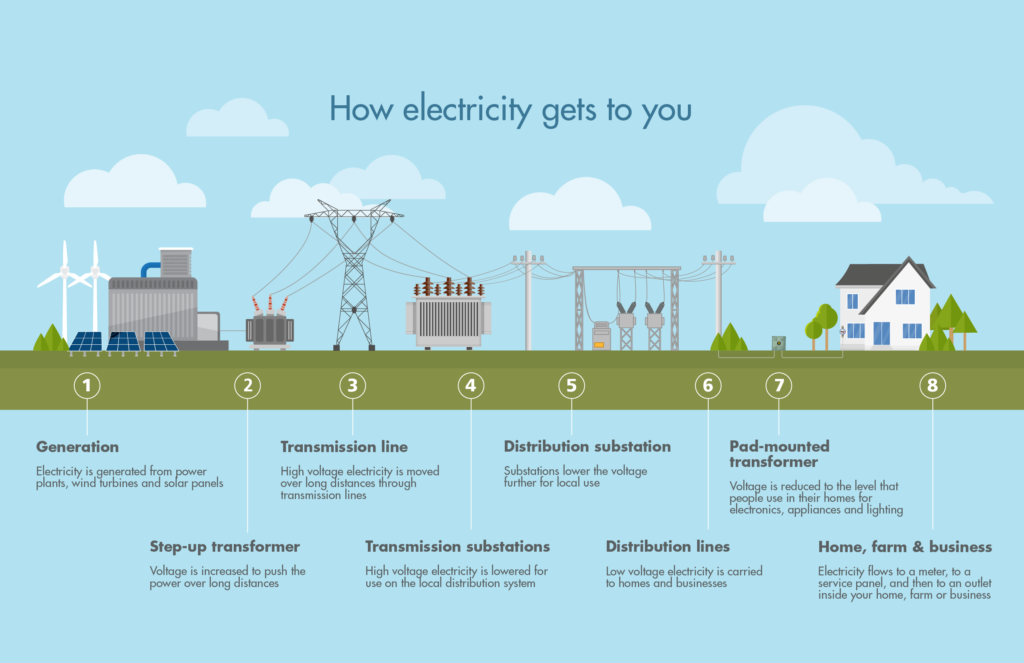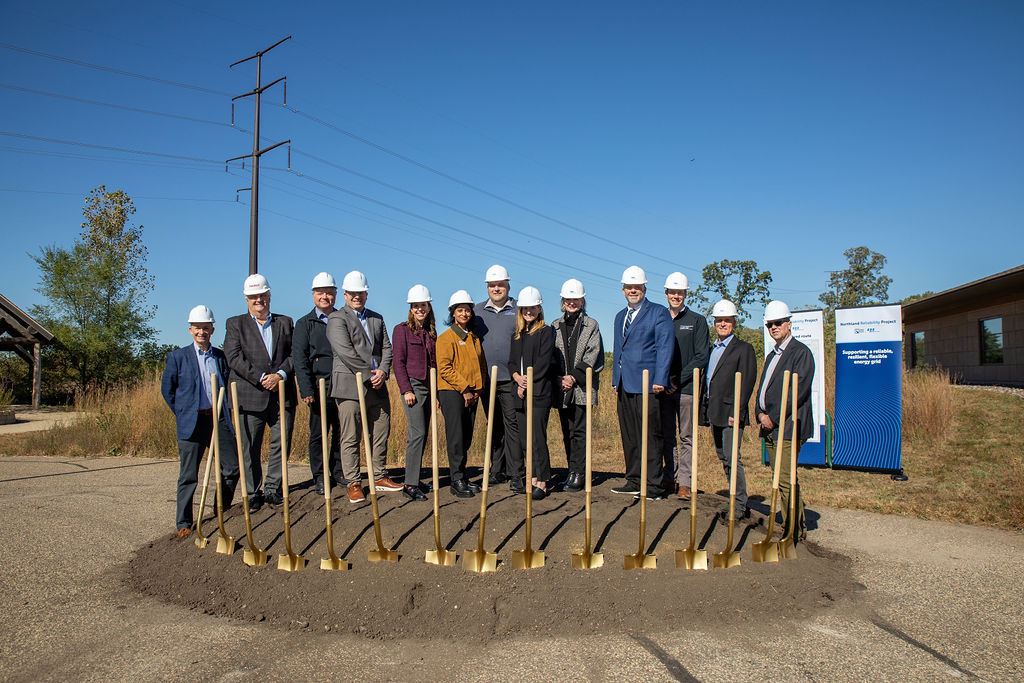Whenever you flip a switch, charge your smart phone or store food in the freezer, you’re relying on the grid to bring you reliable electricity.
At a basic level, the electric grid is a set of interconnected wires connecting places where energy is produced to where it is used. Over time, the grid has become smarter, more dynamic, and increasingly interconnected due to advancements in technology along with additional wind and solar energy resources.
Great River Energy is the wholesale power supplier to 28 member-owner cooperatives and uses the grid to move energy and information to ensure reliable electric service and quick response times when there is an issue on the electric system.
But how does the grid work?
Electricity is made by huge spinning turbines at generating stations using coal, wind, natural gas or water. Electricity from these generators, located at places like power plants and wind farms, is pushed along high voltage transmission lines to substations where the voltage can be “stepped down” to lower, more usable levels. Then, it is sent along smaller distribution lines to be delivered to neighborhoods.
From there, transformers reduce the voltage again to make the power safe to use in homes, schools, farms and small businesses. These transformers may be mounted on poles or sitting on the ground (they’re the big green boxes or “pad-mounted transformers”).
Electricity then runs from the transformer to your house and passes through a meter that measures how much each home or business uses. A service panel in the home is equipped with breakers or fuses that protect the wires inside a house from being overloaded. Electricity then travels through wires inside the walls to the outlets and switches that we use every day in homes and businesses.
That’s how reliable power gets to you in our increasingly power-dependent world.

Click on image to view a higher-resolution version.

 " data-object-fit="cover">
" data-object-fit="cover">